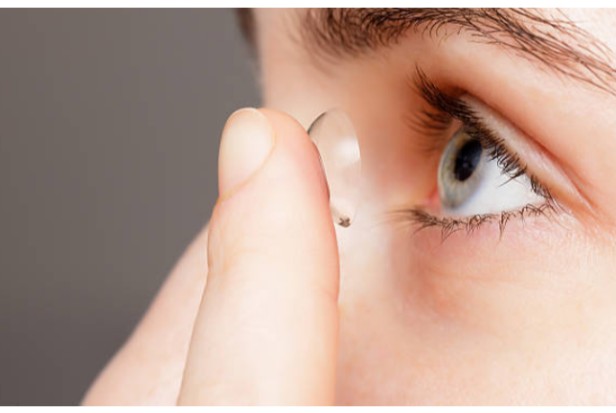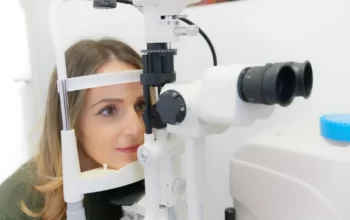
We will discuss how the eye focuses, how lenses work, how to read a prescription, and finally how lenses are made, including the steps involved in shaping and grinding plastic lens blanks to fit a person’s prescription and frame, in this article.
Transparent glass or plastic sheets called corrective lenses are used to alter how light enters your eye so that it is properly refracted. It accomplishes this by assisting your eyes in sharply focusing the incoming light onto the retina.
What Are Corrective Lenses?
Transparent glass or plastic sheets called corrective lenses are used to alter how light enters your eye so that it is properly refracted. It accomplishes this by aiding in the direct illumination of the retina by your eyes as they focus incoming light. Your corrective lenses will be prescribed by our optometrist based on the amount of light bending that will occur, which is expressed in diopters. As a general rule, the greater the need for light to be refracted, the higher the prescription you will be given and the thicker the lenses you need will be.
- In order to increase the distance that light will travel to focus on the retina if myopia is determined, concave lenses will be prescribed.
- If hyperopia is identified, you will be given lenses that will shorten the distance that light must travel in order to be precisely focused on the retina.
- Cylindrical lenses are used to make multiple focus points if you have astigmatism.
- Two kinds of prescription lenses can help you see clearly if presbyopia is the cause of your vision problems. Monovision lenses will correct your nearsightedness in one eye while your farsightedness is corrected in the other. By dividing each lens into two, multifocal lenses are able to correct various distances. While the bottom half will improve your ability to see close-up objects, the top half will correct your distance vision.
Glasses Or Contact Lenses?
You can put corrective lenses in contact lenses or glasses. Glasses continue to be the most popular treatment for refractive eye problems, and the variety of lens options available means that there is a pair of glasses that will work for almost every patient. Instead of being worn in front of the eye, contact lenses are worn on them, and the prescription required for contacts is very different from that required for glasses. Additionally, contact lenses come in a wide variety of types, making them appropriate for a wide range of patients.
Our knowledgeable staff will be happy to assist you if you’re unsure whether glasses or contact lenses are the best choice for you. For an appointment, kindly get in touch with our office right away.

How Your Eye Focuses
On the back of your eye is a complex layer of cells known as the retina. When light strikes the retina, it responds and tells the brain. The brain then converts all of this activity into an image. The surface of the retina is curved because the eye is a sphere.
When you look at something, three things must happen:
- To fit on the retina, the image must be scaled down.
- The scattered light must come together — that is, it must focus — at the surface of the retina.
- To correspond to the retina’s curve, the image must be curved.
To do all that, the eye has a lens between the retina and the pupil (the “peep hole” in the center of your eye that allows light into the back of the eye) and a transparent covering, or cornea (the front window). The lens, which would be classified a “plus” lens because it is thickest toward the center, and the cornea work together to focus the image onto the retina.
Out of Focus
Sometimes, for different reasons, the eye doesn’t focus quite right:
- The surfaces of the lens or cornea may not be smooth, causing an aberration that results in a streak of distortion called astigmatism.
- The lens may not be able to change its curve to properly match the image (called accommodation).
- Vision blurring could be caused by an incorrectly shaped cornea.
The majority of vision issues arise when the retina cannot be imaged by the eye in sufficient detail. Here are a few of the most common problems:
- Myopia (nearsightedness) occurs when a distant object looks blurred because the image comes into focus before it reaches the retina. A minus lens, which pulls the focus back further, can be used to treat myopia.
- Hyperopia (farsightedness) occurs when a close object looks blurred because the image doesn’t come into focus before it gets to the retina. A plus lens can be used to treat hyperopia, which can also develop as we age. Bifocal lenses, which have a small plus segment, can help a farsighted person read or do close work, such as sewing.
- Astigmatism is caused by a distortion that results in a second focal point. With a cylinder curve, it can be fixed.
In addition, lenses can be made to correct for double vision when the eyes do not work together (“crossed eyes”). The lenses accomplish this by adjusting the image to correspond with the misaligned eye.
Therefore, corrective lenses are prescribed to correct for aberrations, to change the focal point’s position relative to the retina, or to make up for other abnormalities.
How a Lens Works
The best way to understand the behavior of light through a curved lens is to relate it to a prism. A prism is thicker at one end, and light passing through it is bent (refracted) toward the thickest portion. A diagram is provided below.
A lens can be thought of as two rounded prisms joined together. The thickest part of the prisms always receives the light that passes through the lens. To make a minus lens (above on the left), the thickest part, the base, of the prisms is on the outer edges and the thinnest part, the apex, is in the middle. By doing so, the focal point is shifted forward and the light is dispersed from the lens’s center. The focal point is separated from the lens by the strength of the lens.
The thickest portion of the lens is in the center and the thinnest portion is on the edges to create a plus lens (above on the right). When the light is bent toward the center, the focal point shifts back. The focal point is nearer to the lens as the lens becomes stronger.
The focal point will be adjusted to make up for the eye’s inability to focus the image on the retina by placing the proper kind and power of lens in front of the eye.
Conclusion: Do You Need Prescription Lenses?
Even though you might have had 20/20 vision last year, as you get older, you might start to experience near- or farsightedness in one or both of your eyes. A few other natural effects of aging that reduce vision clarity are astigmatism and cataracts. You might unintentionally be straining your eyes as a result if you don’t have the required corrective lenses.
Fortunately, you can use the EyeQue Insight at any time, anywhere to determine whether you need glasses or contacts to improve your vision. The EyeQue Personal Vision Tracker can be used at home to determine the recommended strength of your lenses (refractive error correction) and how soon you should order them if you do need corrective lenses.



